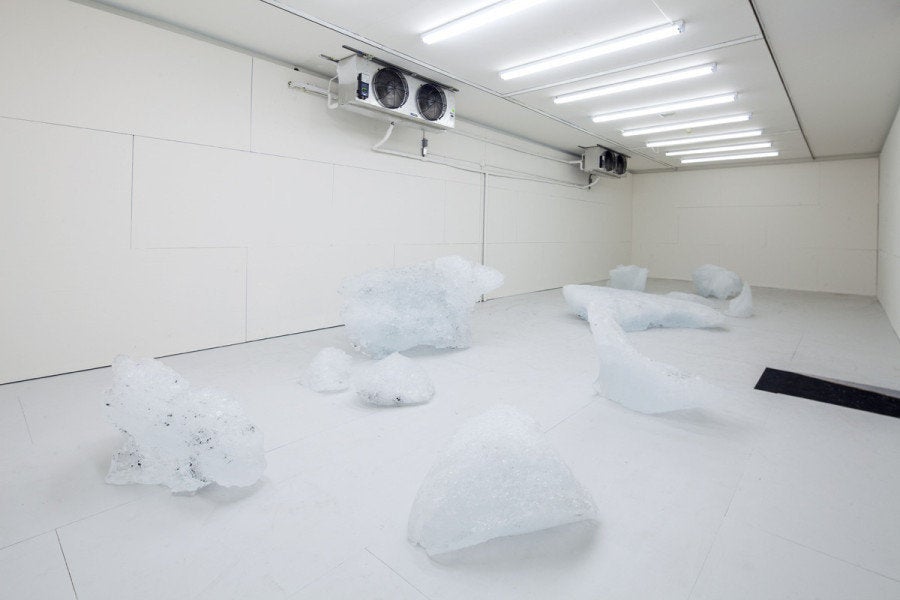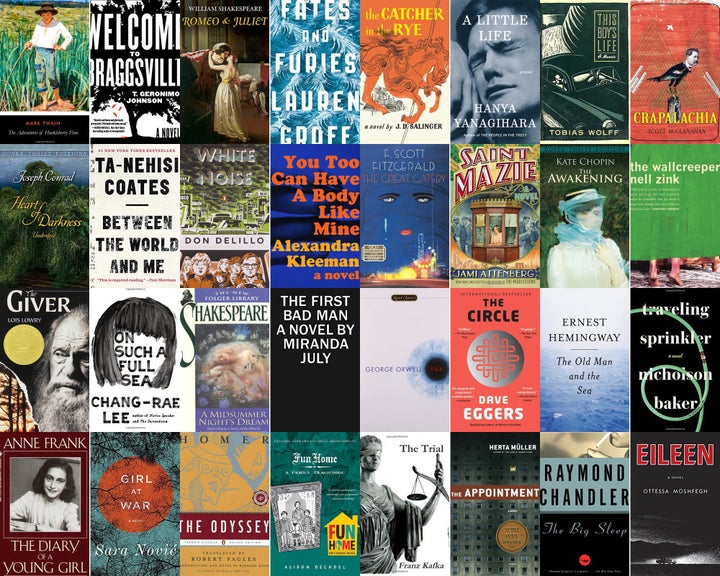
It's September and backpacks everywhere are lurching over shoulders, filled to the brim with sharp pencils, barely cracked textbooks and Trapper Keepers whose Velcro seams still scream with crispness.
Or, erm, it's 2015. So maybe those backpacks are teeming with iPads, styluses and phantom data plans. Anyway, kids are going back to school. And even if you're too old for a backpack (YOU'RE NEVER TOO OLD FOR A BACKPACK), this is the month you remember heading back to the grind, setting your eyes on the syllabi that outline the next semester of your life. That's right -- it's reading time.
We, of the post-backpack age, know all too well that reading lists can get a little stale. The classics tend to dominate English teachers' plans, and throughout grade school, high school and college you're often stuck reading the same ol' tomes off the same ol' lists. So, let's fix that. The writers at HuffPost Culture teamed up to create an alternative back-to-school reading list, in which books like The Giver and Heart of Darkness are replaced with works like On Such A Full Sea and The World and Me.
Behold:
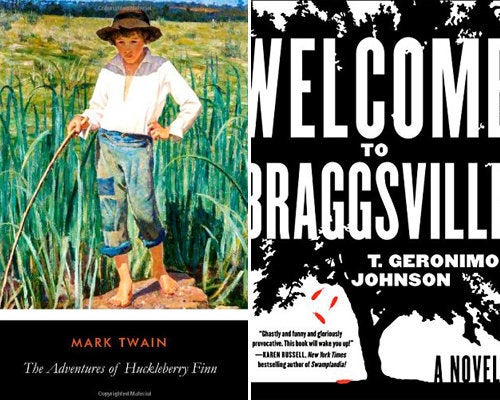
If The Adventures of Huckleberry Finn by Mark Twain then Welcome to Braggsville by T. Geronimo Johnson
Mark Twain’s controversial classic takes the voice of a rebellious but ultimately rather conventional young white boy as he escapes from his abusive, neglectful father and joins forces with Jim, who’s fleeing enslavement. Huck slowly learns to treat Jim with a modicum of respect, as the book itself painfully confronts readers with the pervasive, brutal dehumanization of black people under slavery. To modern readers, the methods may seem rather antiquated -- not to mention the very idea of having white writers as the foremost commentators on racial relations -- but Johnson’s darkly hilarious, starkly horrifying novel is the perfect remedy. Welcome to Braggsville explodes the harmful delusions of white people, Southern conservatives and ivory-tower liberals alike, by following a young white college student as he sees his idealistic fantasy of the racial dynamics and divisions of his hometown crumble away to reveal the ugliness below. (Plus, the humor is worthy of Twain.) -- Claire Fallon
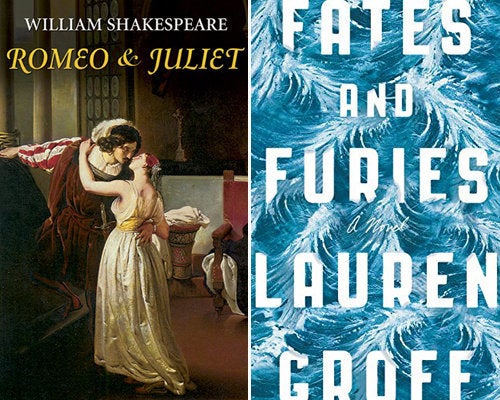
If Romeo and Juliet by William Shakespeare then Fates and Furies by Lauren Groff
Shakespeare's tragic story of two fated young lovers is beautiful in its complexity. It can be read as naivety at its worst, as the indifference of the gods, as the impossibility of purity -- or, as a beautiful combination of all three. Lauren Groff's new novel about the conjoined viewpoints of a single marriage has shades of Shakespearean drama -- one of its protagonists is a playwright, after all -- without the outdated references to no-longer-relevant social customs. It's funny, it's heartbreaking, and the language, like the Bard's, coruscates like the sun on water. -- Maddie Crum
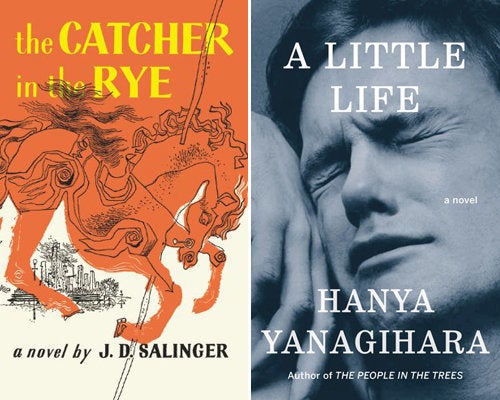
If Catcher in the Rye by J.D. Salinger then A Little Life by Hanya Yanagihara
Catcher in the Rye is one of those now-standard tales about a boy fleeing to New York City in search of a life more exciting than the one he currently leads. In a short span of time, Salinger takes the reader from one familiar landmark to the next, with his protagonist Holden inevitably exploring his sexuality, his friendships and his ambitions along the way. The novel famously ends with the line: “Don’t ever tell anybody anything. If you do, you start missing everybody.” A Little Life follows not one but four men who’ve flocked to NYC with grand ideals about relationships and even grander assumptions about what life owes the ambitious. Yes, there’s a fair share of that coming-of-age sexual investigation and moral negotiating sprinkled in too. But Yanagihara takes the reader much further than the final sentiment of Salinger’s bildungsroman, mining what it means to tell people your secrets and long for the way things were. -- Katherine Brooks
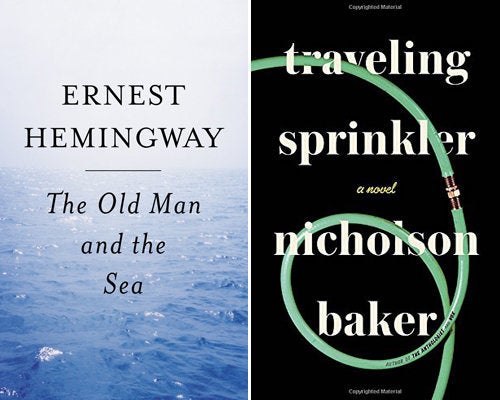
If The Old Man and the Sea by Ernest Hemingway then Traveling Sprinkler by Nicholson Baker
The Old Man and the Sea follows Santiago, an elderly man in Cuba whose lifetime obsession is fishing, during his final catch. Traveling Sprinkler tells the tale of Paul Chowder, an aging poet who becomes obsessed with making pop music, specifically, protest songs. In both books, not much happens, but the monotony of passion becomes its own kind of poetry. -- Priscilla Frank
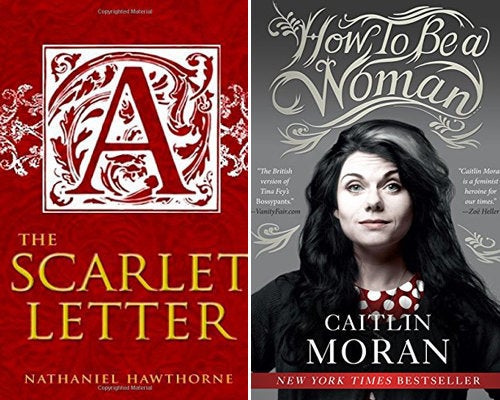
If The Scarlet Letter by Nathaniel Hawthorne then How To Be A Woman by Caitlin Moran
The Scarlet Letter is kind of the OG slut-shaming manual, but it is also written in the kind of antiquated and self-satisfied prose that would make an eighth-grader pretend to be illiterate. Swap out Nathaniel Hawthorne for Caitlin Moran’s real-life advice, with tips on the everyday struggle of living life as a woman in a man’s world. Note: This one is worth reading critically. It’s a sort of how-to for feminism and also a how-not-to for white feminism. But actively deconstructing Moran’s privilege makes How To Be A Woman a challenging, active read. -- Lauren Duca
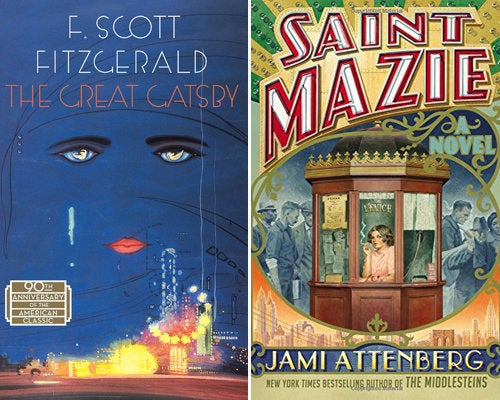
If The Great Gatsby by F. Scott Fitzgerald then Saint Mazie by Jami Attenberg
I remember Gatsby as the one required-reading book everyone in my high school seemed to actually like; I even made the closing line my senior quote and got flack from the yearbook staff for the word “orgiastic.” In the years since, I’ve realized that maybe having Gatsby and his romantic, spendy ideas as my personal green light wasn’t particularly wise -- but having Attenberg’s Mazie Phillips, patron saint of the the Venice movie theater in the Jazz Age, where she presides over the box office, is. I’m not knocking F. Scott, but Attenberg’s story is a useful contemporary, a narrative where women have way more depth and agency and where readers are firmly placed in the grit and magic of New York City, not simply taken there on a brief car ride away from West Egg. -- Jill Capewell
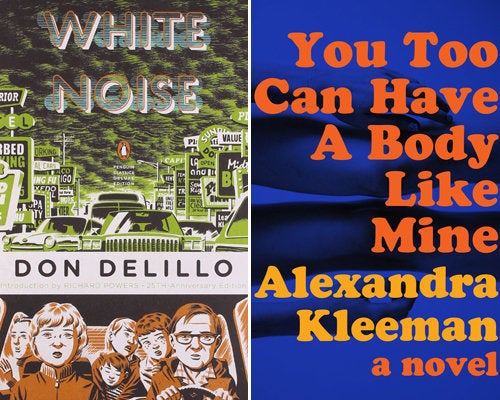
If White Noise by Don DeLillo then You Too Could Have a Body Like Mine by Alexandra Kleeman
Female novelists have historically been placed in a nearly impossible bind, steered to write dramas and comedies about domestic matters, then patted on the head for their banal but nicely written clichés. The masters of postmodernism, when cited, are nearly all men, and Don DeLillo tops the list. His eerie tale of a professor of Hitler Studies and the inexplicable threat that upends his sensible, livable everyday echoes through Kleeman’s debut. In a world in which everything seems hyperreal and a little bit askew, our heroine, A, stumbles onto a secret hiding in plain sight. Like DeLillo, Kleeman uses the literary and emotional frisson of the uncanny to refocus our gaze on the creeping rot in the real world -- the unfettered TV consumption, the pervasive advertising, the fixation on dieting and looking perfect -- by mirroring it in the funhouse mirror of a parallel universe much like our own. -- Claire Fallon

If The Awakening by Kate Chopin then The Wallcreeper by Nell Zink
A reprieve from a stifling marriage ends badly, illustrating the limited options available to women. Kate Chopin's The Awakening is a required reading staple, and for good reason. But Zink's Wallcreeper offers a contemporary perspective on marital tumult, working in sex-fueled clubs, environmentalism, and the merits of striking out on one's own, putting more stock in personal causes than interpersonal relationships. -- Maddie Crum

If The Giver by Lois Lowry then On Such A Full Sea by Chang-rae Lee
Lowry gives us a young male protagonist, lost in a dystopian world that seems reliant on his decision to remain complacent. Lee updates this concept a bit, creating a world not as black-and-white as The Giver’s Sameness, but eerily familiar in its dependence on the people who don’t ask questions. There are mysterious disappearances. There is a land beyond their cozy urban center, B-Mor. But this time, we’re given a young female protagonist, Fan, who, like Lowry’s Jonas, is brave enough to give up everything to fight for someone they love. -- Katherine Brooks
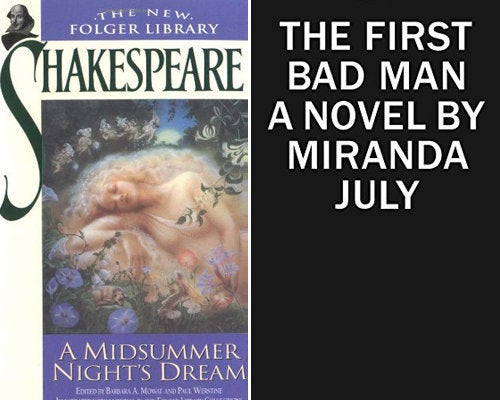
If A Midsummer Night’s Dream by William Shakespeare The First Bad Man by Miranda July
In William Shakespeare’s A Midsummer Night’s Dream you’ve got Hermia, who is in love with Lysander, but supposed to marry Demetrius. In Miranda July’s first novel, you start with Cheryl Glickman, an unassuming forty-something who works at a self defense non-profit and is in love with her co-worker Phillip, who is in love with a 16-year-old. Both the Shakespearian comedy and the July novel take on a dark and dreamlike quality as desire changes shape, shifts direction and gets super weird. But, obviously, July’s world is weirder. -- Priscilla Frank

If Heart of Darkness by Joseph Conrad then Between the World and Me by Ta-Nehisi Coates
Joseph Conrad’s Heart of Darkness is a kind of humid descent into racism akin to frequenting an outpost of the Rainforest Cafe in a Louisiana mall. Its themes are thick and heavy with historical context, which often feel icky in the hands of uninformed (white) English teachers (sorry, Mrs. Whitman!). It seems far better to grapple with the modern day experience of black America through the careful hand of Ta-Nehisi Coates in Between the World and Me, easily one of our foremost writers. Also, Jay Z likes him. -- Lauren Duca
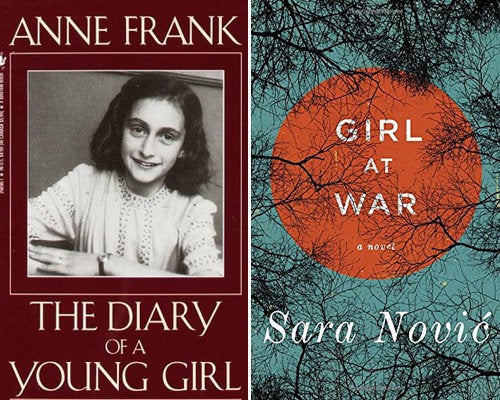
If The Diary of Anne Frank by Anne Frank then Girl at War by Sara Nović
There is simply no replacement for the iconic and resonant musings of Anne Frank, who came of age in a cramped apartment hideaway in Amsterdam during WWII and the Holocaust, and whose legacy is a reminder of the senseless loss and tragedy of warfare. Nović’s Girl at War should be just as required to read, though -- this fictional narrative follows young Ana Jurić, living out a typical childhood in Zagreb until civil war breaks out in Yugoslavia. The ensuing chaos changes Ana forever, splintering her family and leaving her to fend for herself in the war-torn environment, eventually risking her life to escape to America. Throughout the book, readers see glimpses Ana years later, as a college student in New York still coping with the events of her childhood. Nović’s novel takes a sharp look at a recent conflict through the eyes of a young girl, a brutal reminder that the devastation of war isn’t something to be found only in history books. -- Jill Capewell
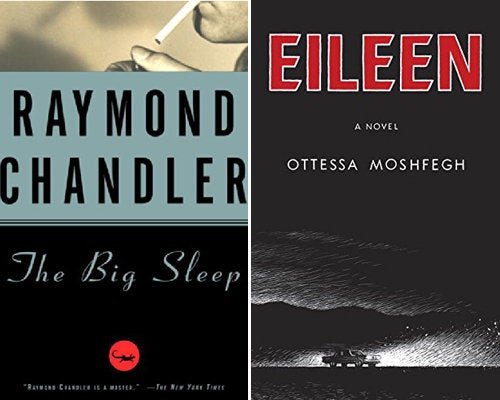
If The Big Sleep by Raymond Chandler then Eileen by Ottessa Moshfegh
When you’re looking for a thriller or crime novel with a little extra intrigue, there are plenty of experimental, stylistically ambitious, or boundary-pushing ones out there. Raymond Chandler’s The Big Sleep remains beloved today because his noir novel had that little extra something; it’s weird, it’s mindbending, it’s character-focused. It’s also a slough of misogyny, with an upright, clever male lead and cunning women whose evil is so profound it hangs about them like a miasma. So if you liked The Big Sleep but would like it a bit more with a bit less sexism, try Eileen, another noir novel in which the heart is not the narrative, but the atmosphere and vivid characterization. Reading, you’ll feel squalid, unnerved, repulsed, uncomfortably aware of the human body’s damp places and excretions and unpalatable urges. And while Eileen herself is no angel, even before she’s semi-willingly drawn into the dark secret that throws her life off-course, she tells her own unsettling story. Take that, Philip Marlowe. -- Claire Fallon
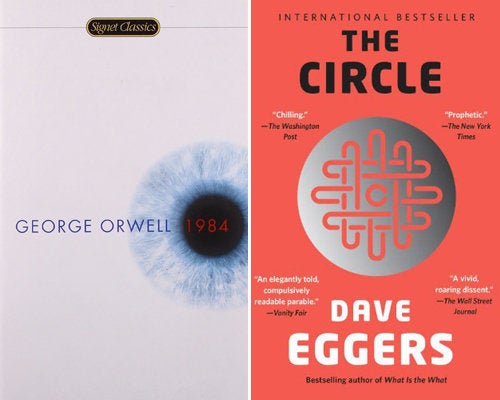
If Nineteen Eighty-Four by George Orwell then The Circle by Dave Eggers
Nineteen Eighty-Four references abound in discussions of censorship, but there may be more relevant ways of examining how technology can control the ways we speak, communicate and think. Dave Eggers' funny satire about a San Francisco super-company (think Google meets Facebook) explains that there's a fine line between constant online socialization and a loss of personal identity. Plus, he gets in a few goofy digs about the Etsy-fueled DIY craze, and other minor contemporary woes. -- Maddie Crum
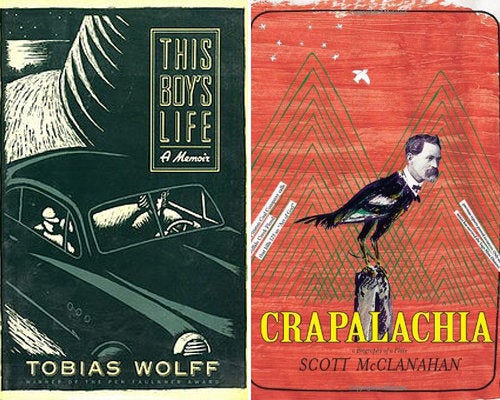
If This Boy’s Life by Tobias Wolff then Crapalachia by Scott McClanahan
This Boy’s Life is one of those memoirs almost everyone reads in school, filled with complicated relationships, abuse, financial struggle, abandonment, betrayal, all wrapped up in a story about one boy (the author) and his family. Crapalachia is also a memoir, one that centers on a kid’s need to escape and self-recreate. McClanahan recalls his early life in low-income West Virginia, marred by family secrets and a desire to get the hell out of Dodge. The story is so meticulously retold that the reader is left wondering which parts appear too shiny, which parts sound too bizarre to be real. That’s because McClanahan’s writing echoes the family mythologizing we all grin and bear. -- Katherine Brooks
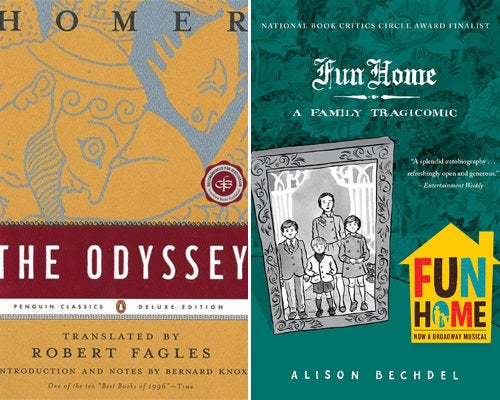
If The Odyssey by Homer then Fun Home by Alison Bechdel
OK, it kind of feels like the association here is “instead of The Odyssey; anything else,” but! let’s rethink the hero’s journey for a second. If you’re not translating The Odyssey from Greek, there’s really not a lot to be learned from it. Well, blah, blah, blah, fate and free will. Plenty of that in Alison Bechdel’s graphic novelization of finding herself and her sexuality out of the darkness of her family history. Bonus: Instead of cheating and watching the movie you can just see the show on Broadway! -- Lauren Duca
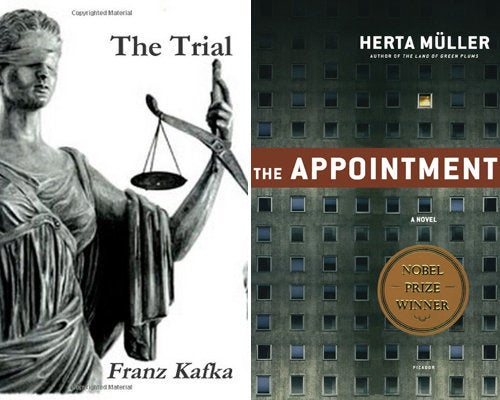
If The Trial by Franz Kafka then The Appointment by Herta Müller
In Kafka’s The Trial, a young banker is arrested for what appears to be no reason by an inaccessible authority. In Müller's Appointment, a nameless protagonist is interrogated relentlessly at the whim of Romania’s secret police. Both books spill outside of chronological telling to wrap the reader in a thick fog of memories, parables, struggles and eventual unraveling. Although both novels delve into the desperation and insanity that arise at the result of a totalitarian regime, Muller focuses more on the shapes that personal relationships take under such dire conditions. -- Priscilla Frank
Also on HuffPost:

